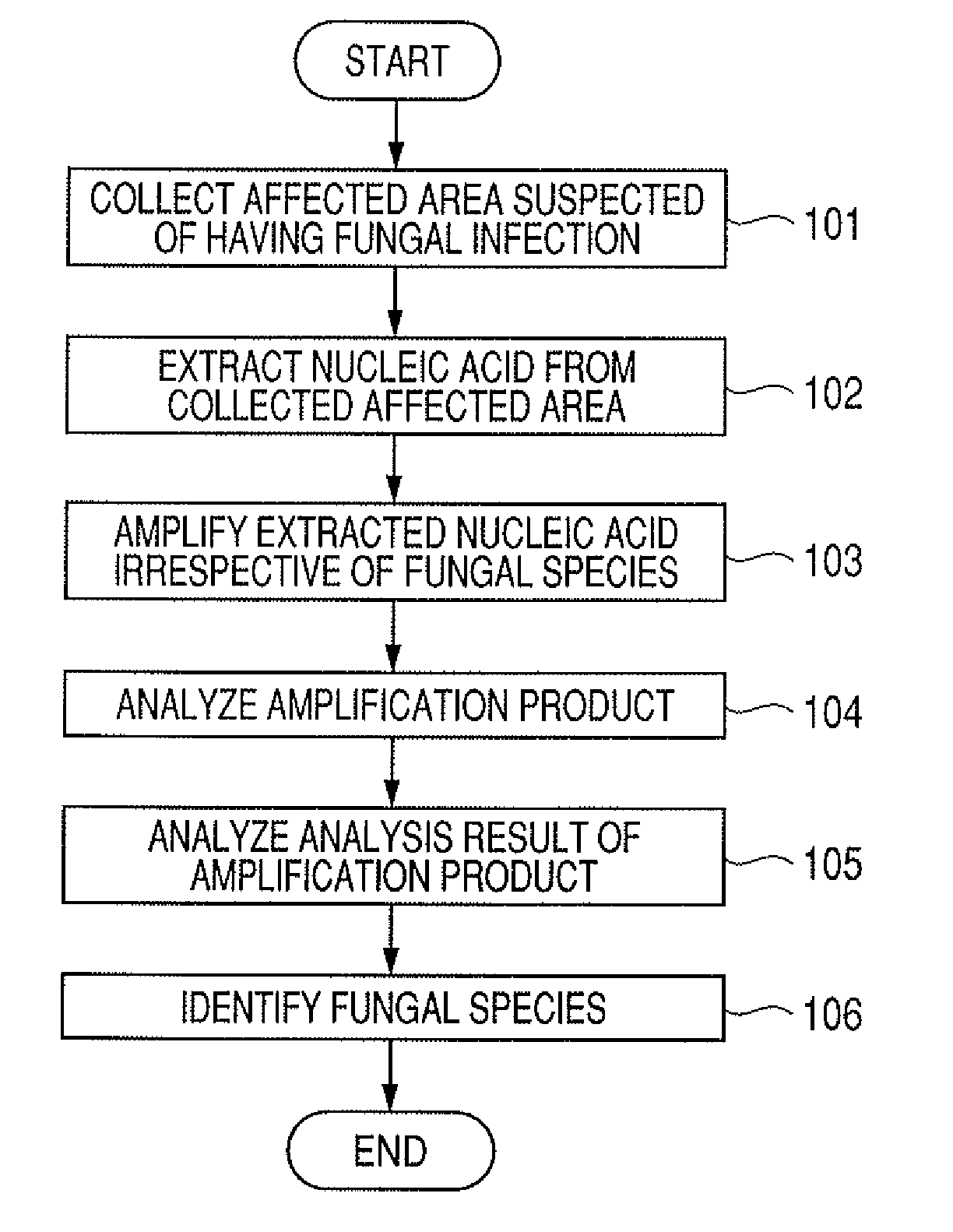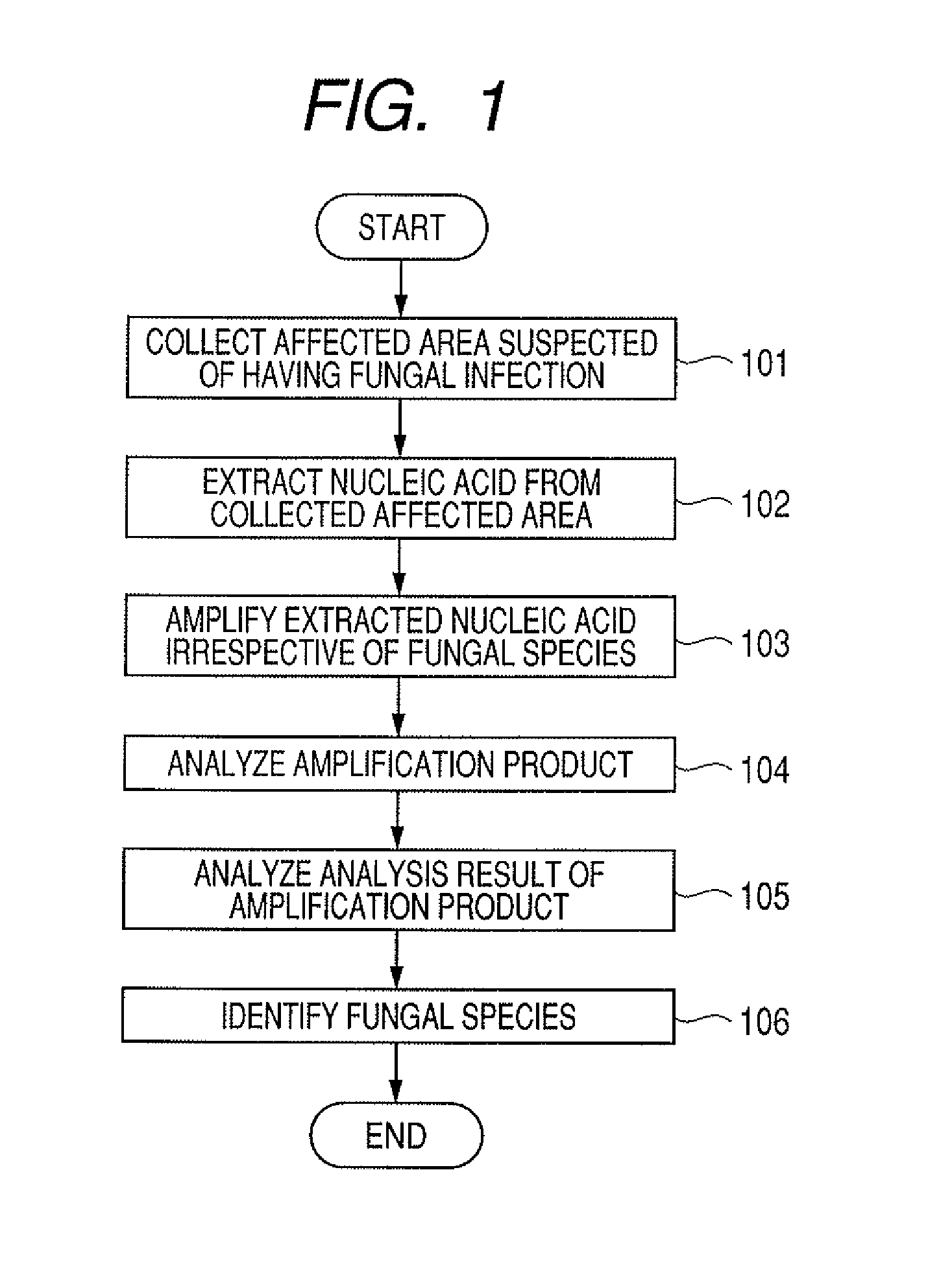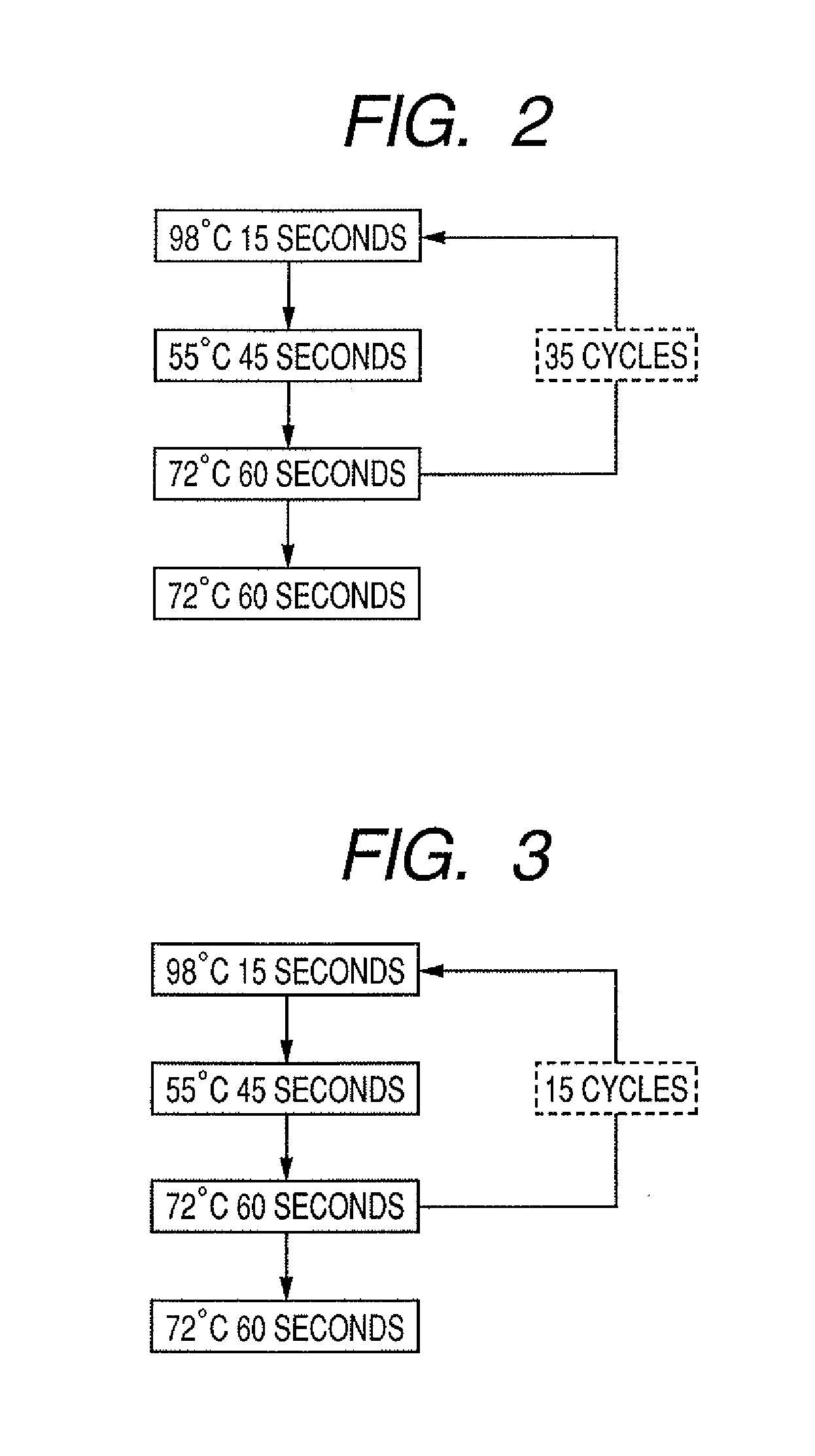Probe set, probe carrier, and method for determining and identifying fungus
- Summary
- Abstract
- Description
- Claims
- Application Information
AI Technical Summary
Benefits of technology
Problems solved by technology
Method used
Image
Examples
example 1
Preparation of DNA Chip for Fungal Species Identification
[0085]A DNA chip is prepared which is capable of identifying a fungal species by hybridization with nucleic acids amplified from the common regions of fungal species to be detected.
[0086]1. Selection of Fungi to be Detected
[0087]One embodiment of a method for identifying a fungal species described in the present invention was directed to fungi shown in Table 1 below as fungi to be detected.
TABLE 1Possible fungal speciesNo.Fungal Name1Candida albicans2Candida dubliniensis3Candida glabrata4Candida guilliermondii5Candida intermedia6Candida kefyr7Candida krusei8Candida lusitaniae9Candida parapsilosis10Candida tropicalis11Trichosporon cutaneum12Trichosporon asahii13Cryptococcus neoformans14Aspergillus fumigatus15Aspergillus niger16Epidermophyton floccosum17Arthroderma otae18Arthroderma gypseum19Arthroderma benhamiae20Trichophyton rubrum21Trichophyton tonsurans22Trichophyton verrucosum23Trichophyton violaceum24Arthroderma vanbreuseg...
example 2
Identification of Causative Fungus of Nail Disease
[0137]DNA is directly extracted without culture from a nail disease-affected area and used for identifying a causative fungal species thereof.
[0138]1. Specimen Collection
[0139]Nail specimens were collected from the affected areas of patients who gave informed consent, of patients who visited dermatology.
[0140]These nail specimens are divided into two groups, one of which is subjected to identification by culture according to a standard method, and the other of which is subjected to identification by the method described in the present invention.
[0141]2. Pretreatment
[0142]DNA was amplified after extraction using the primers shown in Table 2 in the same way as in Example 1. In this context, obvious nucleic acid amplification was observed, demonstrating the presence of some fungus in the nail specimens.
[0143]The amplification products were labeled using the primer for labeling shown in Table 8 and then subjected to hybridization reactio...
example 3
Identification of Causative Fungi of Nail Disease (Identification of Plural Fungal Species)
[0158]In the present Example, the extraction of plural fungi from a nail will be described as an example.
[0159]1. Hybridization
[0160]The amplification and hybridization of DNA extracted from a nail were performed in the same way as in the method shown in (Example 2). As a result, fluorescence intensities shown in Tables 93 to 95 below were obtained. The fluorescence intensity shown in Tables 93 to 95 is a mean value of results of experiments performed 9 times using DNA extracted from the same specimen.
TABLE 93FluorescenceGroupProbe NameIntensity1P0101246.4P0102482.2P0103587.7P010447.92P020147.9P020247.7P0204287.8P020546.33P030246.0P030348.3P030446.2P030545.64P0401463.6P04022601.0P04033486.9P04044171.65P050346.2P050246.36P060144.4P060246.0P060348.0P060446.37P070145.1P070291.7P070344.2P070445.38P080146.1P080346.19P0901387.8P0902737.9P09032294.4
TABLE 94FluorescenceGroupProbe NameIntensity10P11024...
PUM
| Property | Measurement | Unit |
|---|---|---|
| Electrical conductance | aaaaa | aaaaa |
| Electrical conductance | aaaaa | aaaaa |
| Distance | aaaaa | aaaaa |
Abstract
Description
Claims
Application Information
 Login to View More
Login to View More - R&D
- Intellectual Property
- Life Sciences
- Materials
- Tech Scout
- Unparalleled Data Quality
- Higher Quality Content
- 60% Fewer Hallucinations
Browse by: Latest US Patents, China's latest patents, Technical Efficacy Thesaurus, Application Domain, Technology Topic, Popular Technical Reports.
© 2025 PatSnap. All rights reserved.Legal|Privacy policy|Modern Slavery Act Transparency Statement|Sitemap|About US| Contact US: help@patsnap.com



